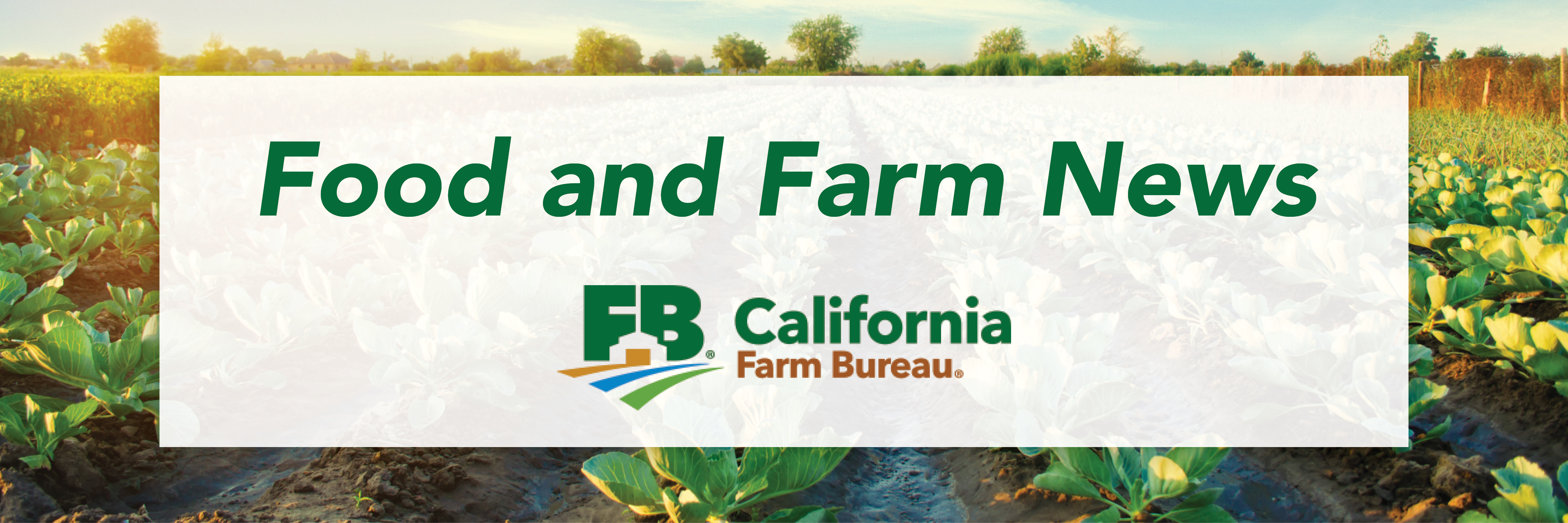Food And Farm News

12-31-25
New state laws affecting farms take effect Jan. 1
Several new state laws set to take effect this week will impact agriculture in California. Beginning Jan. 1, the cost of agricultural labor will rise as California's minimum wage increases in 2026 from $16.50 to $16.90 an hour. A new state law will affect the way counties in California address abandoned orchards and vineyards, which have increased pest pressures in neighboring farms in recent years as lower prices for winegrapes and tree nuts resulted in a surge in abandoned acreage. A pair of new laws will give California farmers and ranchers more options for disposal of organic waste. A different new state law will provide more opportunities for agritourism operators by reducing regulatory barriers to hosting overnight campers on working lands. And while immigration law is federal, a new California law bans the use of face coverings by law enforcement officers, possibly affecting immigration enforcement operations in the state.
Winegrape growers continue removing vines amid 'challenging times'
California winegrape growers continued this year to remove vineyards as the sector contends with an oversupply of grapes due to a global downturn in wine sales. Sonoma County grower Andrew Forchini said his 2025 crop turned out well, but like many winegrape growers, he struggled to sell the fruit. "It was hard to find a buyer. If you're lucky and have your crops sold, you're doing well. But if you don't have your crops sold or have half your crops sold, it's very challenging times," Forchini told Ag Alert® in a field report, adding he had reduced his acreage in response to the winegrape market. "We removed a percentage of acreage this growing season that we couldn't sell. We're going to remove a little more."
New fig variety inspires excitement and nostalgia
Fig lovers who long for the taste of an older variety called Calimyrna, which is largely phased out of commercial production in California, may be in luck. San Joaquin Valley fig grower Kevin Herman has harvested his first full crop of a new variety called Emerald, which he described as a replacement for the Calimyrna. "We're excited about the future of this variety," Herman told Ag Alert® in a field report. "We've been picking and packing and shipping the heck out of them. Consumers really like them." He said the large, green figs evoke crème brûlée and almond flavors, with the fruit reminding some consumers of Calimyrna, which has limited production because it requires a complicated, labor-intensive pollination process involving the fig wasp. "A lot of folks are nostalgic about heirloom varieties," said Herman, who farms in Fresno, Madera and Merced counties. "They like this fig because it reminds them of some of those heirloom varieties that have come and gone."
Webinar series aims to help farmers transition to organic
A new webinar series featuring a range of experts, including farmers and scientists, aims to help farmers transition from conventional to organic crop production. Held Jan. 14 to March 18, the 10 online sessions will cover the certification process, market dynamics, soil health and soil amendments, pest and weed management, and other key topics of organic production. "Ultimately, we hope to provide the resources, community and support to folks who want to make a successful transition," said Margaret Lloyd, University of California Cooperative Extension organic agriculture and small farms adviser for Yolo, Sacramento and Solano counties. California leads the nation in the number of organic farms, land in organic production and organic sales.
For more information about any story in Food and Farm News, contact the California Farm Bureau Marketing/Communications Division at 916-561-5550 or email news@cfbf.com. Connect with us on Facebook, X, or Instagram: @CAFarmBureau.




.svg.png?cacheid=0.9616018850896426)